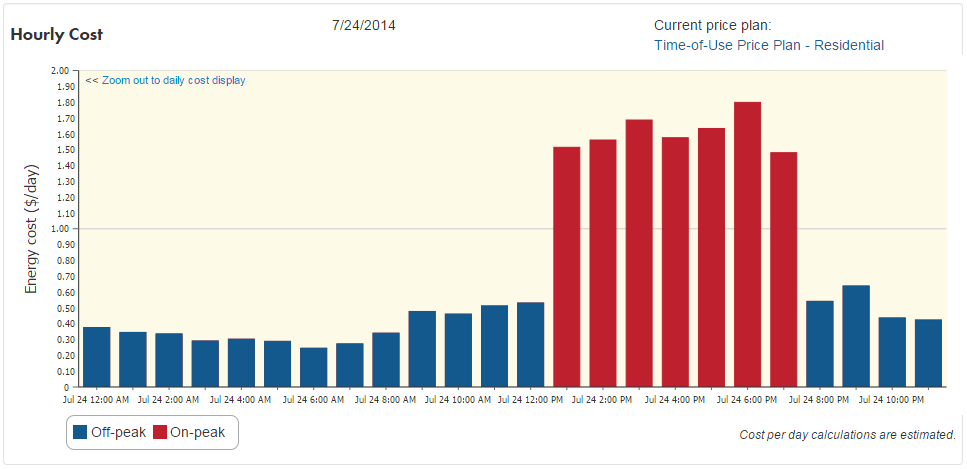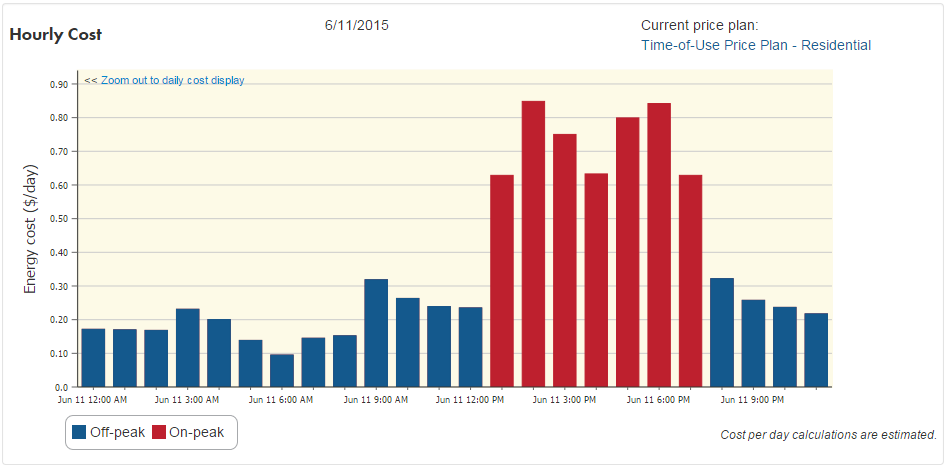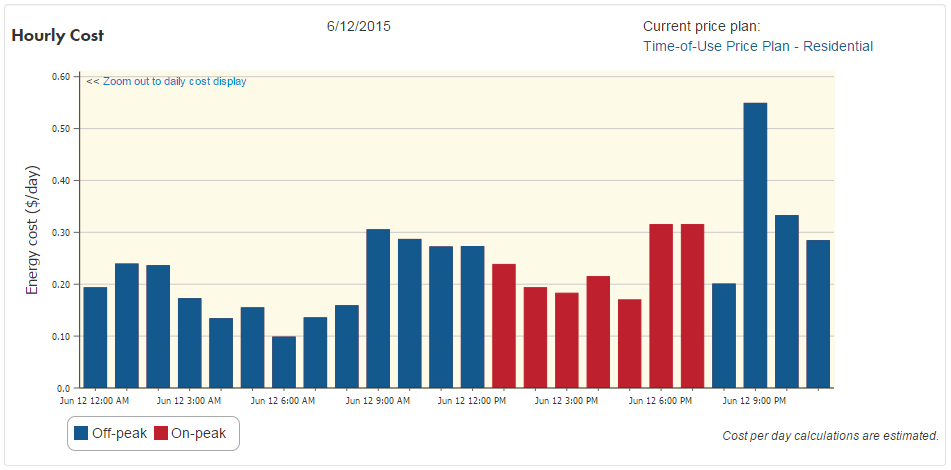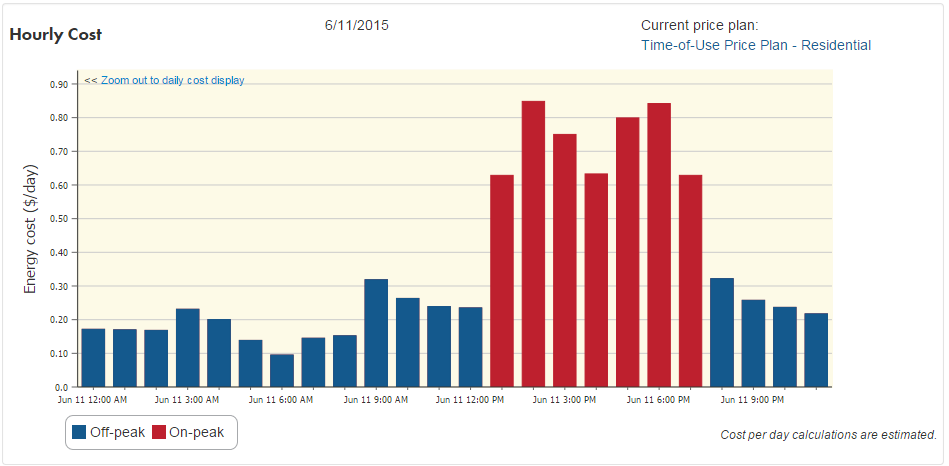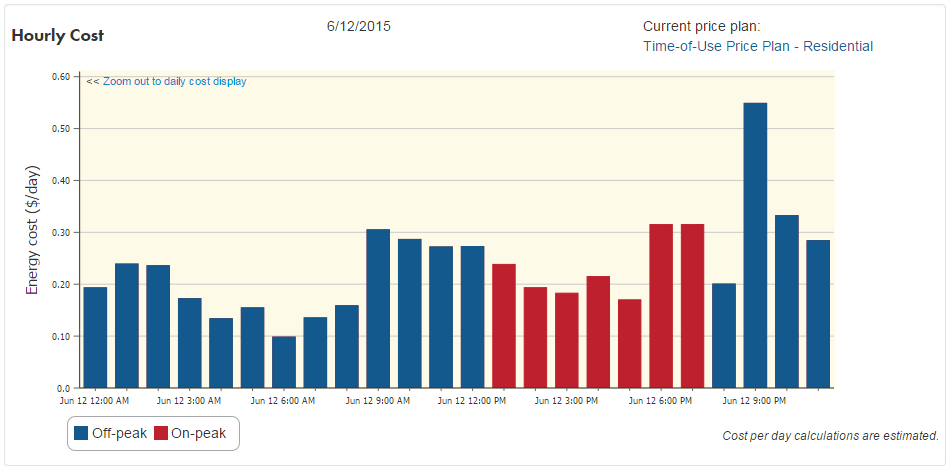NW-Bound
Give me a museum and I'll fill it. (Picasso) Give me a forum ...
- Joined
- Jul 3, 2008
- Messages
- 35,712
... My reward for all this? Hmmm, let's see... the 6 bulbs ( 4 CFLs and two 4W night light bulbs to provide a resistive load for the old timer) add up to about 60W total, so one hour x 60W x 365 days/year is 21.9 kWh, or ~ drum roll...... $2.40 per year. Well, that's pretty anti-climatic. But it was a one time deal, so why not?
Hopefully, the set up will last so that you do not have to jump through hoops again to save $2.40/year.
Here's something I am pondering, when I dig down into my electric usage. Below is a chart showing the daily usage in a summer hot day that I already posted in a concurrent thread about solar energy. You can see the effect of the A/C starting to kick on at around 10AM, and it doesn't let off until 10PM. Actually the A/C runs on/off throughout the night on a hot day like this (minimum temperature still at 90F), but the duty cycle is lower during the night.
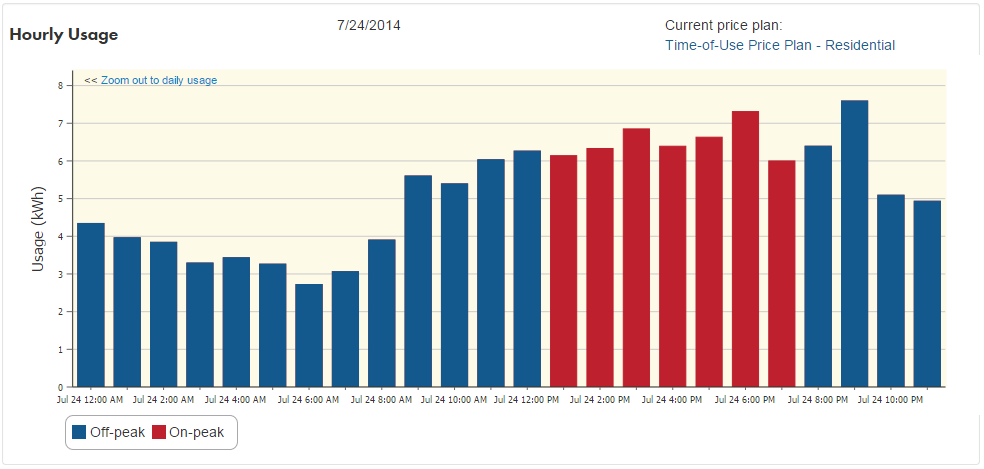
Anyway, look at the dollar chart, and one can see the shocking effect of the off-peak/on-peak difference in costs. It's the difference between 7.41c and 22.26c/kWh.
So, suppose I program the thermostat to cool the home down 1 deg in the hour preceding the rate change, then raise it back after the rate change. The precooling will delay the A/C running for a bit after the high rate kicks in.
I think the above will save me more than your $2.40/year.
